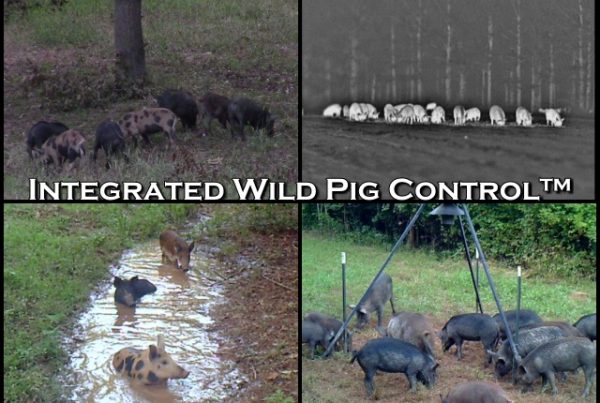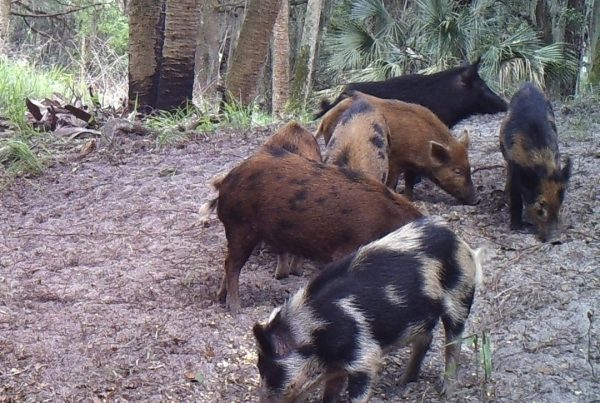Trap Enclosure Materials, Shapes and Sizes
Trap enclosures have emerged in a variety of materials, sizes and shapes. As with all control efforts, there are exact methods and strategies for trap enclosure shape and size which are more effective and efficient than others. Gamekeepers should make informed decisions based on actual results.
Standard Traps
Standard portable traps are built four feet wide by eight feet long by cutting 16 foot long livestock panels to size and welding the enclosed top and bottom. This practice allows the device to fit inside a standard truck bed. Although portable traps are easily relocated, we do not recommend them because these devices only capture juveniles and uneducated adults. This example only captured 1 of 8 for 13% success. Seven adults were educated to avoid 4 x 8 future metal contraptions while continuing to breed and overpopulate.
35′ Diameter Corral Trap
We also tested small, 10 foot diameter trap enclosure by locking the door in an open position and pre-baiting 10-14 days. Here is an example of 11 pigs using this location as a bait site. It is impossible to achieve 100% capture results when only 4 of 11 will step inside the enclosure. Common sense dictates users must employ larger traps with wider gate thresholds to improve their capture efficiency and obtain 100% results. The most efficient design in our research was a 35’ diameter corral trap using six 18-60™ trap panels and an 8 foot wide gate threshold. A round design provides the largest trap area for materials used and there are no corners for the animals to pile up and jump out. Erecting large corral traps allowed us to capture entire sounders in hours or days instead of wasting weeks of fuel, time and labor using small, portable traps to obtain substandard results. Our goal is to share Integrated Wild Pig Control® methods and technologies allowing landowners to better control feral pig populations on your property.




